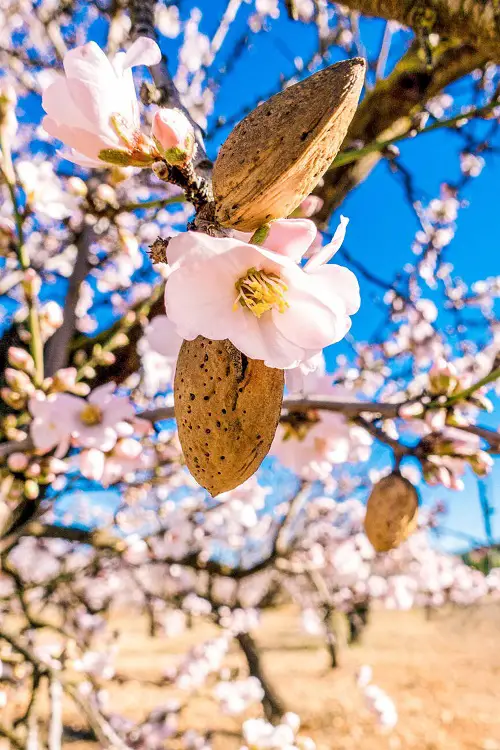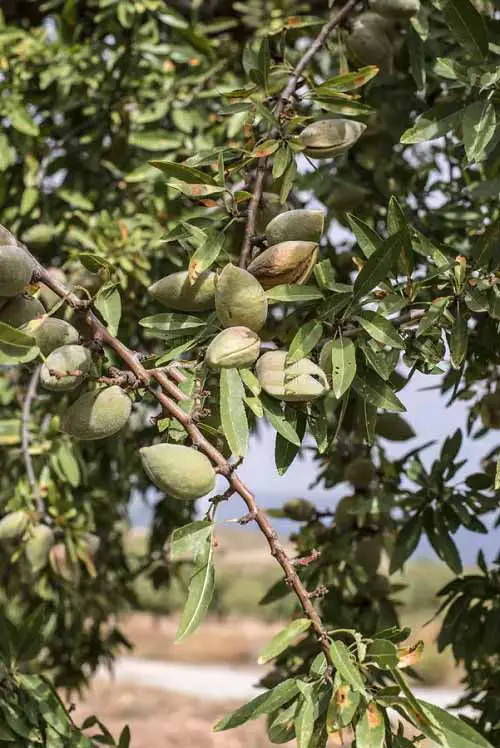Where Do Almonds Come From? Loved worldwide since ancient times, this superfood keeps growing in demand. Let’s explore!

Who doesn’t feel extra cool using almond milk instead of dairy in their coffee or tossing these crunchy protein-rich nuts into their vegan protein shake? Touted as a plant-based superfood, this rich seed’s popularity has been skyrocketing, especially among the health-conscious.
But almonds are not new or simply trendy. Their use as a cultivated food dates back to the early Bronze Age, so they’ve been a favorite for thousands of years! However, a lot has changed in how and where they are produced now. Dig in to find out!
What is an Almond?
Surprise! Almond isn’t a true nut like cashew, walnut, or pecan. The almond tree (Prunus dulcis) produces a fleshy fruit that contains a hard-shelled seed, which we know as almond. This seed contains impressive amounts of vitamin E, healthy fats, protein, fiber, and magnesium.
Now, there are two types: sweet and bitter. We eat the sweet ones, which are rich, crunchy, and nutty-flavored, while bitter almonds are used to produce oil. You can eat the edible ones raw, roasted, or blanched, and they are key ingredients in almond milk, butter, oil, etc.
Despite their undisputed status as a nutritional powerhouse, there’s much debate about whether these delicious kernels are sustainable. Much work and resources go into extracting the seeds from their hard shells. It’s time to discover!
Where Do Almonds Come From?
Known by different names worldwide, such as Almendra, Mandel, Badam, and Mandorlo, California exports nearly 80 percent of the world’s supply.
However, the almond tree is native to Mediterranean and Middle Eastern regions, including Spain, Morocco, Greece, and Iran, and eventually traveled to China and other parts of Asia.
Thriving in warm, dry summers and mild, wet winters, California’s vast farmlands now have a monopoly over its production, but it’s not all fun and games. Read here to learn more about how almonds grow and their requirements.
How Does Almond Grow?
Botanically known as Prunus dulcis, it belongs to the rose family. An average almond tree can be between 15 to 30 feet tall and starts to fruit when it reaches 4-5 years of age after planting. It typically blooms from late winter to early spring, followed by fruits that are ready to harvest in late summer or autumn.
A Tale of Caution

Now that we know where almonds come from, let’s look at what ails this superfood.
This deciduous tree thrives on abundant water, acreage, and pesticides. Its resource-intensive nature has threatened its status as a vegan star, prompting several Californian producers to quit during droughts as low watering reduces production.
According to this 2019 study, it takes 3.2 gallons (12 liters) of water to produce one almond.
While almonds need bees to flourish, billions die due to harmful chemicals and pesticides used in producing commercial almonds. However, you could always pick ones growing in its traditional habitats, such as Spanish and Italian varieties, or those produced ethically.





